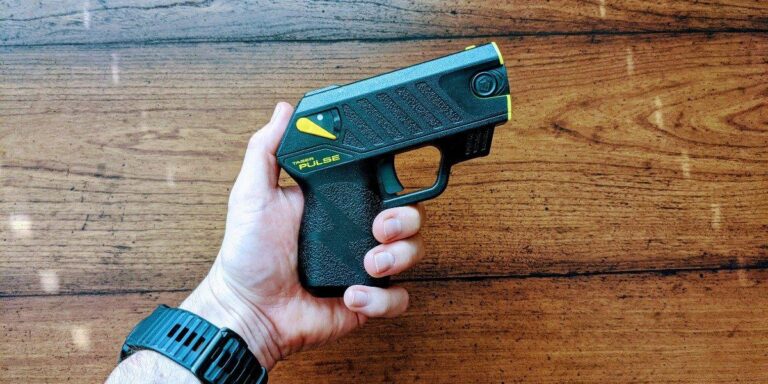Table of Contents
- Effectiveness of Stun Guns on Different Types of Clothing
- Factors That Influence Stun Gun Performance Through Fabric
- Safety Considerations When Using Stun Guns Over Clothing
- Tips for Choosing the Right Stun Gun Based on Your Clothing Needs
- The Conclusion
Effectiveness of Stun Guns on Different Types of Clothing
When considering the use of stun guns for self-defense, the type of clothing between the device and the target plays a critical role in its overall effectiveness. Generally, stun guns deliver an electric shock that needs to make direct or near-direct contact with the body to incapacitate an attacker. Thin or tight-fitting clothes, such as t-shirts or light fabrics, rarely interfere with the electrical charge. However, bulky or layered clothing can significantly diminish the stun gun’s impact. For example, heavy coats, denim jeans, or multiple layers of thick garments tend to absorb or disperse the electric current, reducing its ability to reach the skin and incapacitate effectively.
Here are some key factors that influence stun gun effectiveness through clothing:
- Thickness and Material: Natural fibers like cotton allow better conductivity compared to synthetic materials that may insulate or block the electric charge.
- Multiple Layers: Each additional layer acts as a barrier, meaning that stun guns might only work reliably on single or minimal layers.
- Fit and Contact: Close contact with the skin facilitates better current flow; loose or baggy clothing can reduce this contact and effectiveness.
Understanding these variables can help users better prepare and choose the appropriate tactics when relying on stun guns as a defensive tool, ensuring the device performs optimally regardless of clothing conditions.
Factors That Influence Stun Gun Performance Through Fabric
Several key elements determine how effectively a stun gun can penetrate clothing to deliver a disabling shock. Fabric thickness plays a crucial role; thin materials like cotton or polyester generally allow electrodes to make direct contact with the skin more easily, whereas thick or layered fabrics such as denim, leather, or heavy winter coats can act as substantial barriers. Additionally, the type of fabric matters-natural fibers tend to be less resistant to electrical current than synthetic blends, which may repel or dissipate the charge altogether. Stun gun power and amperage, although often overlooked, also influence performance. Higher voltage devices have a better chance of overcoming the insulating effects of clothing, but even the most powerful units can struggle with multiple layers.
Other environmental and situational factors further affect effectiveness through clothing:
- Moisture and sweat can enhance conductivity, making it easier for electrical currents to pass through fabric
- Fit and tension of the clothing-tight, stretched fabrics may allow better electrode contact than loose, baggy garments
- Contact point duration: a brief touch might not deliver sufficient shock, but holding the stun gun in place a little longer improves chances of success
Safety Considerations When Using Stun Guns Over Clothing
When deploying stun guns over layers of clothing, it’s crucial to remember that while the device can penetrate fabric, the type and thickness of the material greatly influence effectiveness and safety. Heavy jackets, multiple layers, or thick textiles can reduce the voltage reaching the target, potentially requiring closer or prolonged contact to achieve the desired immobilization. However, applying excessive force or extending the stun duration increases the risk of accidental injury, such as burns or bruises, both to the assailant and yourself.
To minimize hazards, always adhere to these safety guidelines:
- Avoid targeting sensitive areas: Aim for larger muscle groups like the torso or thighs rather than the head or neck to prevent severe trauma.
- Check fabric type: Synthetic materials may conduct electricity differently than natural fibers, impacting stun effectiveness.
- Maintain device integrity: Regularly inspect your stun gun for damage to ensure it functions properly without unexpected malfunction during use.
- Practice controlled usage: Limit stun duration to avoid unnecessary harm, sticking to short bursts rather than sustained contact.
Tips for Choosing the Right Stun Gun Based on Your Clothing Needs
When selecting a stun gun tailored to your clothing preferences, consider the device’s penetration capability first. Heavier fabrics like denim or multiple layers require higher voltage or specialized probes designed to ensure effective contact through thick material. For example, stun guns with longer prongs or enhanced pulse strength offer better performance against bulky jackets or hoodies. Conversely, if you wear lighter clothing most days, a compact, standard voltage model will provide adequate protection without unnecessary bulk.
Additionally, think about the convenience and ease of use based on your wardrobe. If your clothing often restricts quick access, opt for stun guns with ergonomic designs that fit comfortably in your hand or pocket. Features like quick charge times and intuitive activation buttons can make a significant difference in stressful situations. Consider carrying your stun gun in an easily reachable spot, such as a belt holster or a dedicated pocket, to complement your outfit’s style and enhance your readiness.
- Choose voltage strength based on fabric thickness
- Look for longer prongs for multi-layered clothing
- Prioritize ergonomic and compact designs for ease of carry
- Ensure quick activation to match your clothing style
The Conclusion
In conclusion, while stun guns can often penetrate clothing to deliver an effective shock, factors like the thickness and material of the fabric can influence their performance. Understanding these nuances is crucial for anyone considering a stun gun for self-defense. Always prioritize safety and ensure you’re familiar with the proper use and local regulations surrounding these devices. Staying informed empowers you to make smart decisions that protect both yourself and those around you.Check Our Other Blogs
- StunGun – Your Trusted Source for Stun Guns, Laws, and Self-Defense Tips
- PepperSprayLaws – Your Trusted Resource for Pepper Spray Information
- StunGunLaws – Your Trusted Guide to Stun Gun Legality and Safety



